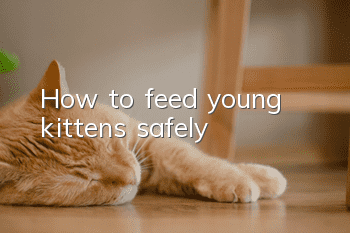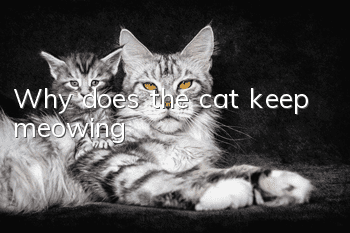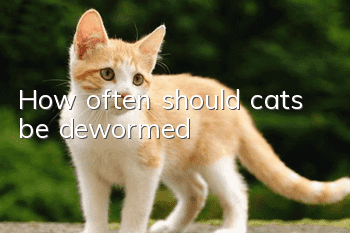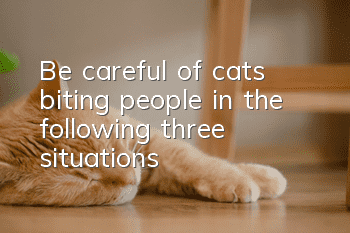How to feed young kittens safely?

1. Rapid growth period (2 months to 6 months old): The kitten enters the rapid growth period after weaning, and the rapid growth period lasts until the kitten reaches 6 months of age. During this period, kittens need high-quality food with balanced nutrition and high protein and calories to provide various nutrients and energy needed for rapid growth. Judging from the energy required per unit body weight, kittens in the rapid growth period require twice as much energy as adult cats; however, kittens have small mouths, small teeth, and small stomachs, so they cannot eat and digest them in one meal. Plenty of food. Therefore, kittens from weaning to six months old must eat at least three meals a day. Because kittens need a lot of nutrients and energy, they must eat specially formulated high-quality kitten food. The characteristic of this type of high-quality kitten food is that it uses meat as the main raw material, is very easy to digest, and contains a large amount of nutrients, which can meet the special nutritional needs of kittens.
2. Rapid maturation period (6 months to 12 months old): When kittens go through a period of rapid growth and reach a body similar to that of an adult cat, their nutritional needs are different. Cats after six months of age begin to grow slower and their activity levels will decrease slightly; at this time, they eat a larger amount of food per meal, so they can reduce the number of meals per day. Although the cat's size is very similar to that of an adult cat at this time, it will still grow somewhat. Many cat owners will feed their cats different foods when they reach sexual maturity; in fact, cats like to eat high-quality dry cat food; at this time, you can add a little nutritious canned cat food to the dry cat food to suit their needs. Different nutritional requirements due to slower growth rates.
3. Convert from kitten food to adult cat food: When a cat reaches one year old, it needs to switch to adult cat food specially prepared for adult cats; adult cats no longer need the large amounts of heat and large amounts of energy provided by kitten food. of nutrients. Remember to follow the same rule when changing pet food: gradually mix it in over 5 to 7 days. During this period of changing food, special attention should be paid to monitoring the cat's weight, and the feeding amount should be adjusted according to the cat's weight at any time. Most cats will eat a certain amount of food according to the heat energy they need, so they can be fed by the ad libitum method. However, if the cat only moves indoors, the amount of activity is not large, so the free-feeding method may cause overweight problems; therefore, quantitative feeding twice a day can be used to prevent the cat from becoming overweight.
4. Avoid feeding human food: Feeding human food to kittens will cause unnecessary distressing behaviors, such as bad habits of begging for food or stealing food. Feeding home-cooked food, feeding young cats with adult cat food (especially weight loss cat food), or adding vitamins and other nutritional supplements to a completely balanced cat food may lead to malnutrition.
5. Nutrition needed by young cats: Cats are absolute carnivores and must obtain nutrients that are only contained in meat. For example, if a cat's food lacks sufficient taurine
- Where is the best place to put the litter box after raising a cat?
- How to treat kitten catitis?
- How to keep your cat warm when it’s cold at home
- How to clean your cat's tail?
- How to train a cat not to play with water?
- Is it really difficult to train cats? How to train cats!
- What is the best thing for cats to eat after giving birth? Recommended diet for cats after giving birth
- How to relieve a cat’s heat
- There are different ways to reprimand and exercise cats on different occasions, you can do better!
- Can cats eat fatty meat?



